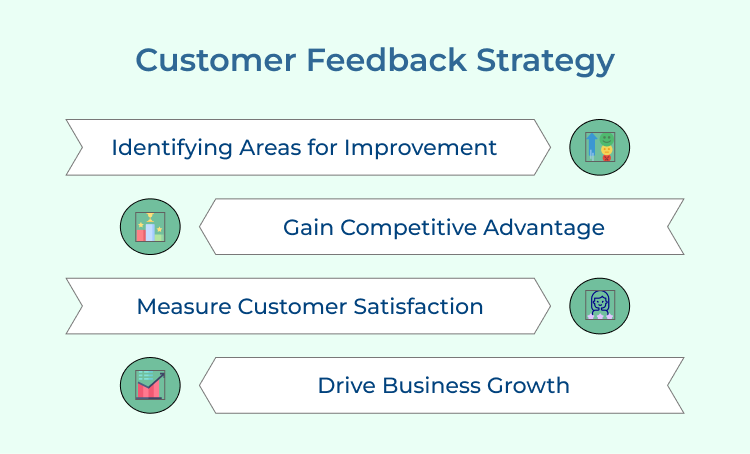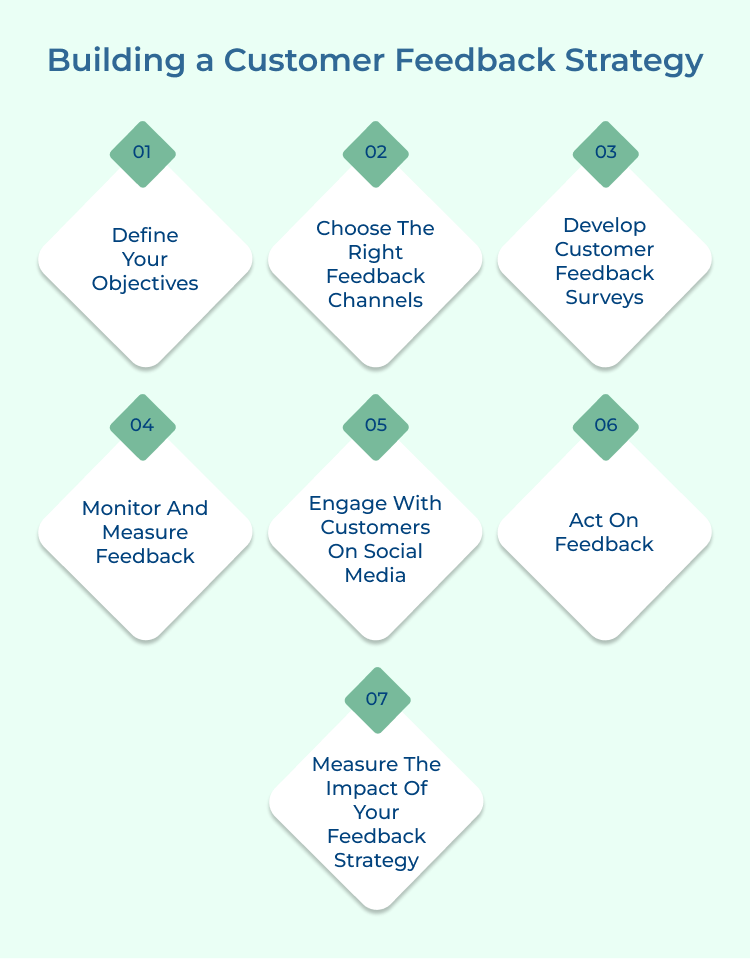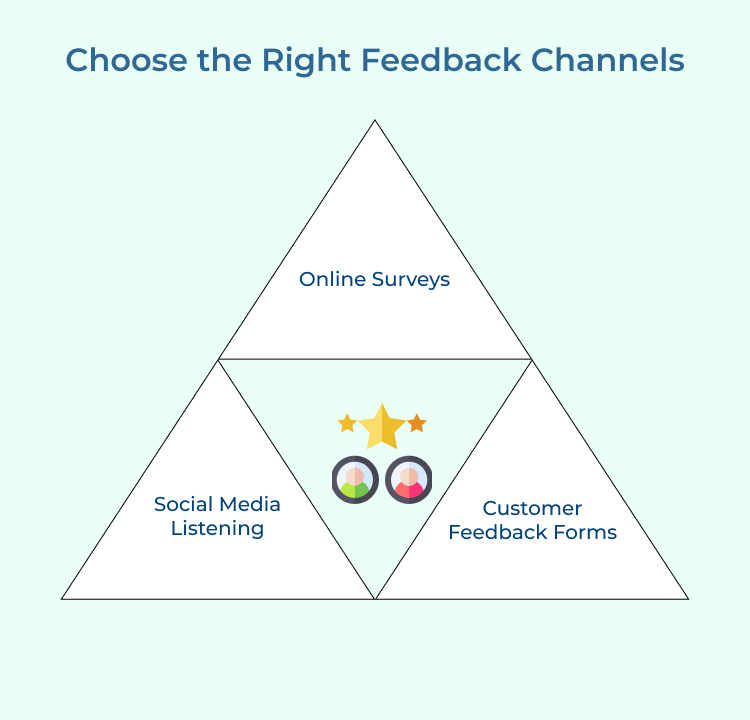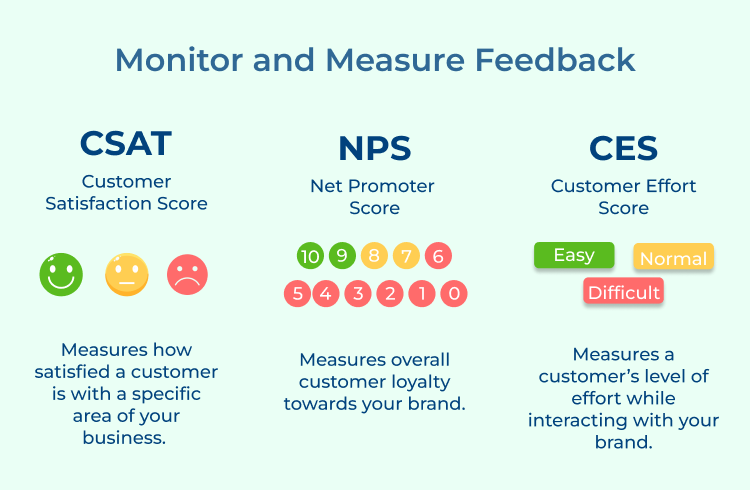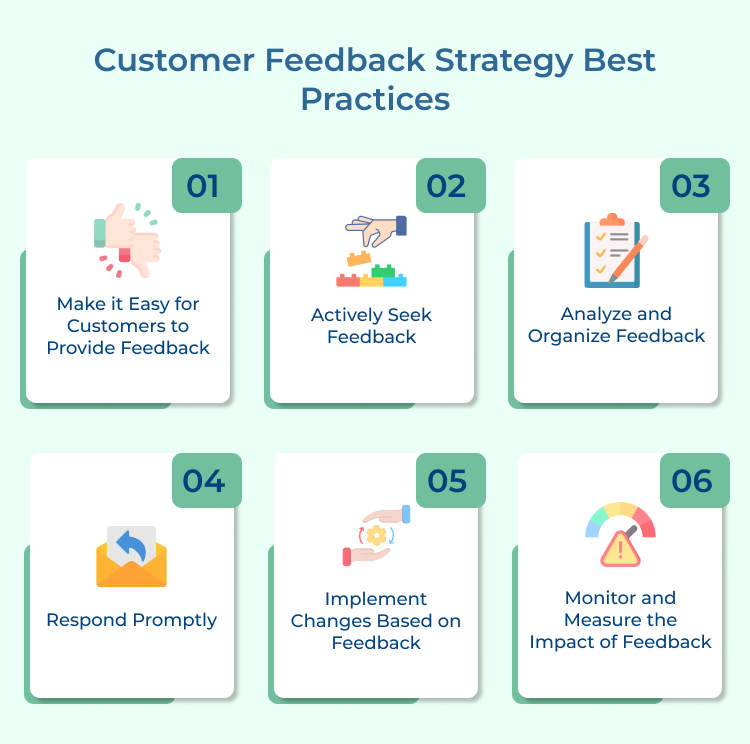Here are some best practices for implementing an effective customer feedback strategy:
- Make it Easy for Customers to Provide Feedback
Customers are more likely to provide feedback if it is easy and convenient. Provide multiple channels for feedback, such as surveys, feedback forms on your website, email surveys, and social media polls. Make sure these channels are easily accessible and user-friendly.
- Actively Seek Feedback
Don’t just wait for feedback to come to you – actively seek it out. Reach out to customers through email, social media, or surveys to gather their thoughts and opinions. Encourage customers to provide feedback by offering incentives or rewards for their participation.
- Analyze and Organize Feedback
Once you have collected feedback, organize and analyze it effectively. Categorize feedback by themes or topics to identify common trends or issues. Use feedback analysis tools to help streamline this process and gain actionable insights from the data.
- Respond Promptly
It is important to acknowledge and respond to customer feedback promptly. Customers appreciate when their concerns are addressed promptly. Responding to feedback also shows that you value customer input and are committed to improving the customer experience.
- Implement Changes Based on Feedback
Use customer feedback as a driving force for improvement. Identify key areas for improvement based on customer feedback and implement changes to address these issues. Communicate these changes to customers to show that their feedback is being taken seriously.
- Monitor and Measure the Impact of Feedback
Continuously monitor the impact of customer feedback on key business metrics such as customer satisfaction and retention. Track the effectiveness of changes made based on feedback and make adjustments as needed.
Examples of Excellent Customer Feedback Strategies
Acquiring feedback is crucial for any business looking to improve its products and services. Implementing effective customer feedback strategies can help businesses identify areas for improvement, enhance customer satisfaction, and increase customer loyalty.
Here are some real-life examples of companies that have excelled in their customer feedback strategies:
1. Apple
Apple is known for its excellent customer feedback strategies, particularly through its Net Promoter Score (NPS) program. Apple regularly collects feedback through surveys and forms, asking them to rate their likelihood of recommending Apple products to others. It is used to measure customer satisfaction and loyalty, allowing Apple to make informed decisions on how to improve its products and services.
2. Airbnb
Airbnb places a strong emphasis on customer feedback. The company regularly sends out surveys to guests and hosts to gather feedback on their experiences and suggestions for improvement. Airbnb has a dedicated customer support team that responds to feedback promptly, addressing any concerns or issues raised by customers.
3. Amazon
Amazon is known for its customer-centric approach, which is evident in its feedback system. Amazon encourages customers to leave reviews and ratings for products they have purchased, helping other customers make informed purchasing decisions. The company also uses customer feedback to continuously improve its website, product offerings, and customer service.
4. Starbucks
Starbucks is another example of a company that values customer feedback. The coffee chain regularly collects feedback through its My Starbucks Idea platform, where customers can submit suggestions for new products, services, or improvements. Starbucks also listens to customer feedback on social media platforms and uses this information to make changes to its menu or store layouts.
Drive your Business Growth with an Effective Customer Feedback System
Implementing an effective customer feedback system is crucial for driving business growth. By gathering insights from your customers, you can identify areas for improvement, enhance customer satisfaction, and increase sales.
Remember to listen to your customers, respond to their feedback, and take action on their suggestions. Continuously seeking feedback and making adjustments based on customer inputs can build stronger client relationships. Invest in a robust customer feedback system today and watch your business thrive.

